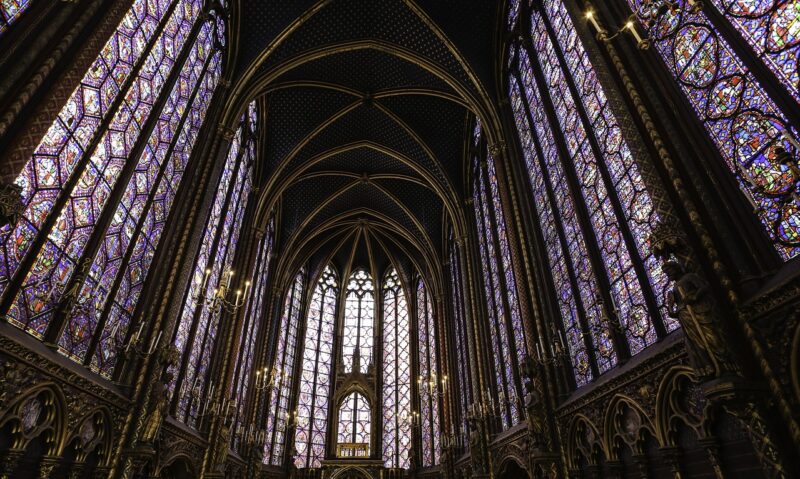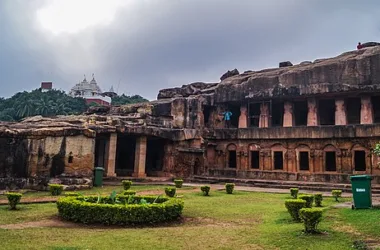When you think of Gothic architecture and stained glass wonders, one name that often comes up is Sainte-Chapelle. Nestled in the heart of Paris, this architectural gem stands as a testament to the grandeur of medieval Europe. Built in the 13th century, it was initially designed to house precious Christian relics, including the Crown of Thorns. Today, it remains a beacon of historical and artistic significance.
Table of Contents
- History of Sainte-Chapelle
- Architectural Marvel
- The Stunning Stained Glass Windows
- Interior Design and Artifacts
- Royal and Religious Importance
- Sainte-Chapelle Through the Ages
- Visiting Sainte-Chapelle
- Sainte-Chapelle in Popular Culture
- Comparisons with Other Gothic Chapels
- Events and Exhibitions
- Conservation and Preservation Efforts
- The Lower Chapel: A Hidden Gem
- Myths and Legends
- Conclusion
- FAQs
History of Sainte-Chapelle
The story of Sainte-Chapelle begins with King Louis IX of France, later known as Saint Louis. Constructed between 1242 and 1248, the chapel was intended to serve as a reliquary for the Passion of Christ artifacts, which Louis IX had acquired. This move not only established Paris as a center of Christian relics but also reinforced the king’s divine right to rule.
Architectural Marvel
Sainte-Chapelle is a masterpiece of Rayonnant Gothic architecture. Its design emphasizes verticality and light, which is evident from the soaring ceilings and large windows. One of the chapel’s most striking features is its spire, which reaches towards the heavens, symbolizing a connection between the earthly and the divine.
The Stunning Stained Glass Windows
Arguably, the most captivating aspect of Sainte-Chapelle is its stained glass windows. These 15 windows, each 15 meters high, depict over 1,100 scenes from the Bible, ranging from Genesis to Revelation. The windows are not just beautiful; they were meant to educate the illiterate masses about biblical stories and the virtues of the saints.
Interior Design and Artifacts
Upon entering the chapel, visitors are greeted by a breathtakingly ornate interior. The upper chapel, in particular, is a riot of colors, with its walls adorned with painted decorations that complement the stained glass. Key artifacts, including statues of apostles and angels, add to the sacred ambiance of the space.
Royal and Religious Importance
Sainte-Chapelle played a crucial role in both royal and religious spheres. It was the site of many important ceremonies, including the reception of relics by the king. Additionally, it served as a royal chapel where the king and his court would attend mass, further emphasizing its dual importance.
Sainte-Chapelle Through the Ages
Over the centuries, Sainte-Chapelle has witnessed numerous changes. The French Revolution brought significant damage, with many relics dispersed and architectural elements destroyed. However, extensive restoration efforts in the 19th century, led by architect Eugène Viollet-le-Duc, helped return the chapel to its former glory.
Visiting Sainte-Chapelle
Located on the Île de la Cité in Paris, Sainte-Chapelle is accessible to visitors year-round. The best time to visit is during the spring and fall when the weather is pleasant, and the crowds are manageable. Make sure to allocate at least an hour to fully appreciate the chapel’s beauty and history.
Sainte-Chapelle in Popular Culture
Sainte-Chapelle has not only influenced architecture but has also left its mark on popular culture. It has been featured in various films and literature, symbolizing the opulence and mystique of medieval France. Its architectural style has inspired numerous other buildings across Europe and beyond.
Comparisons with Other Gothic Chapels
When compared to other Gothic chapels, Sainte-Chapelle stands out for its height and the sheer scale of its stained glass windows. While many Gothic structures feature elaborate façades and flying buttresses, Sainte-Chapelle’s relatively minimalist exterior places more emphasis on its interior splendor.
Events and Exhibitions
Today, Sainte-Chapelle hosts a variety of events, including classical music concerts that take advantage of its superb acoustics. Past exhibitions have focused on its history, the art of stained glass, and the various relics it once housed, offering visitors a deeper understanding of its significance.
Conservation and Preservation Efforts
Maintaining a structure as old and intricate as Sainte-Chapelle presents significant challenges. Ongoing conservation projects aim to preserve the chapel’s stained glass and architectural integrity. These efforts are crucial in ensuring that future generations can continue to marvel at this Gothic wonder.
The Lower Chapel: A Hidden Gem
Often overshadowed by the grandeur of the upper chapel, the lower chapel is equally fascinating. It was originally used by the palace staff and is dedicated to the Virgin Mary. Its vaulted ceilings, adorned with fleur-de-lis and castle motifs, provide a more subdued but equally beautiful experience.
Myths and Legends
Sainte-Chapelle is surrounded by many myths and legends, adding to its allure. One such legend suggests that the chapel was built on the site of a Roman temple dedicated to Jupiter. While there is no historical evidence to support this, it adds a layer of mystery to the chapel’s rich history.
Conclusion
Sainte-Chapelle is more than just a beautiful building; it is a symbol of the medieval era’s architectural ingenuity and religious devotion. Its stunning stained glass windows, rich history, and ongoing cultural significance make it a must-visit for anyone interested in history, art, or architecture.
FAQs
What is the best time to visit Sainte-Chapelle?
The best time to visit Sainte-Chapelle is during the spring and fall when the weather is mild, and the tourist crowds are smaller, allowing for a more pleasant experience.
How long does it take to tour the chapel?
A visit to Sainte-Chapelle typically takes about one to two hours, giving you enough time to fully appreciate the intricate details and history of the chapel.
Are there guided tours available?
Yes, guided tours are available and highly recommended. They provide in-depth information about the history, architecture, and significance of Sainte-Chapelle.
Can you take photos inside Sainte-Chapelle?
Photography is allowed inside Sainte-Chapelle, but flash photography is prohibited to protect the delicate stained glass windows and artworks.
Is Sainte-Chapelle accessible for people with disabilities?
Sainte-Chapelle is partially accessible to people with disabilities. The lower chapel is more accessible, while the upper chapel may pose some challenges due to the narrow staircase.









